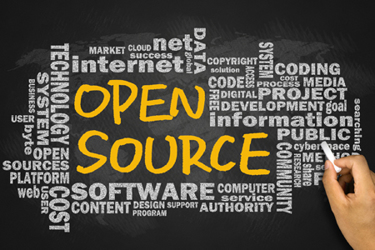4 Lessons For Open-Source Collaborations In Clinical Research
By Lakshmi Sankar and Belinda Griffin, PA Consulting

The urgency of curtailing the spread of COVID-19 has resulted in an energizing refresh of the collaborative landscape for health and life sciences organizations. In a dash to upend a destructive pandemic and meet other healthcare challenges and opportunities, we have seen private and public enterprises in the health, pharmaceutical, and technology sectors partner in entirely new ways. One effect of this has been an increasing need for greater interoperability and connectivity as newly collaborating partners quickly find efficient ways to share information, develop new health solutions, and accelerate speed to market of new products and associated services.
The answer to this call for greater collaboration and interoperability lies in open source, a software development model in which copyrighted source code is made available via a free license for possible modification and redistribution to any interested user or developer. As a result, this creates a decentralized software development model that encourages open collaboration. To expediently and effectively share data, healthcare ecosystem partners are increasingly turning to collaborative open-source solutions as the primary means of enabling interoperability and connectivity in response to COVID-19.
Open-source initiatives have become key drivers in facilitating collaboration and interoperability for several reasons. Open-source solutions provide a faster path to deployment and adoption. The changing ecosystem and new partnering models that emerged in response to COVID-19 required “plug and play” technologies that are well suited to an open-source model. And open-source initiatives allow industry-wide collaboration organizations like standards setting organizations and other stakeholders to be rapidly brought into the solution development process in a way that “go it alone” proprietary approaches do not.
Based on recent experience with open-source initiatives in health and life sciences sectors, four key lessons emerge for ensuring continued success in the future application of open source in clinical research:
- Reframe open source: For many ecosystems and their component organizations, embracing open source will require a shift in mindset to proactively address concerns that participating in open-source initiatives will result in a loss of competitive advantage or create new vulnerabilities. Successful open-source initiatives can go beyond just articulating the technical advantages of the project and articulate how an open-source approach will lead to greater agility, prevent vendor lock-in, and result in more, not less, secure solutions due to the transparency of source code to the entire development community.
For example, the SiLA 2 lab automation and integration initiative has developed a set of success stories and clearly articulated benefit cases that potential adopters can use to influence key stakeholders in their respective organizations.
- Prioritize speed to market over perfection: The development of open-source solutions is intended to be a collaborative process but also a fast and iterative one. Because of this, the trap of striving for perfection in the first iteration, at the expense of time, should be avoided. Speed over perfection should be emphasized. Given the urgency of mitigating the COVID-19 crisis, the ability to deliver a functioning, albeit perhaps slightly imperfect, solution quickly is what has made open source particularly compelling when compared to more proprietary options that would have taken much longer to develop.
- Make room for innovation: An open-source approach is intended to promote innovation. Because of this, it is important to identify what level of prescriptiveness is required for the solution definition and leave the rest open to innovation. In other words, open-source initiatives should provide a foundational solution framework while providing individual adopters the latitude to innovate and customize against their unique requirements.
For example, the OpenSAFELY initiative led by Oxford University provides an open-source research platform for analyzing electronic health record data by drawing from a data set of 58 million patients’ primary care records. While the data sets are shared and policies for use of the platform are tightly governed, individual researchers are encouraged to develop and apply new analytical tools and routines that ultimately get shared with the user community, where they can become sources for further innovation.
- Align delivery to intent: The strength of open source, namely that it is a model capable of attracting a diverse set of development efforts and inputs from a wide array of interested stakeholders, can also be its biggest challenge if the strategic intent of the project gets pulled in divergent directions. Because of this, it is important that any open-source initiative utilizes a license model that will incentivize development consistent with its intended strategic direction. For example, some license models promote commercial development of solutions derived from open-source code that may run counter to the original intent of a particular initiative. Similarly, a well-planned governance model and the availability of resources who can take on responsibility for nurturing the associated open-source community are critical to maintaining the strategic intent of the project.
The Digital Data Flow initiative sponsored by TransCelerate BioPharma aims to facilitate the exchange of structured study definitions across clinical systems, thus modernizing the way data flows across the clinical trials ecosystem and accelerating the development cycle for treatments and vaccines. In support of this aim, the initiative is deploying an open-source license model that fosters participation by a broad ecosystem of clinical technology vendors.
Given the promise that open source offers, as a next step, clinical execs interested in tapping into this potential should look at the different open-source initiatives that apply to their area of interest to see what resonates. A thorough review would help organizations align their interests to an initiative’s focus, purpose, innovation pathway, funding efforts, and governance model.
The gift of open source lies in its inherent ability to democratize the intellectual and technology horsepower, creating room for greater innovation that benefits not one single enterprise but an entire industry and community spanning physical, geographical, and intellectual limitations. In the age of COVID-19, speed, agility, resilience, and teamwork have become the norm for organizations looking to thrive in unprecedented and unpredictable times. The rising cost of healthcare innovation calls for a coming together of different stakeholders in one common space. At no other time has the value and reach of open source been so obvious. Investing time, effort, and resources in this model can spur greater progress for all.
 About the Authors:
About the Authors:
Belinda Griffin is a health and life sciences expert at PA Consulting. She has more than 20 years of experience helping leading organizations transform their operations through technological innovation.
 Lakshmi Sankar is a health and life sciences expert, specializing in organizational strategy, change management, and communications at PA Consulting. She has more than 15 years of experience helping healthcare and life sciences companies transform and manage change across their technological, operational, and workforce transformation programs.
Lakshmi Sankar is a health and life sciences expert, specializing in organizational strategy, change management, and communications at PA Consulting. She has more than 15 years of experience helping healthcare and life sciences companies transform and manage change across their technological, operational, and workforce transformation programs.
